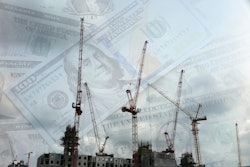
I was hoping that by this time I would have some good news to share with you. Stabilizing prices along with more available and attainable supplies. Minor increases in interest rates. Lower oil prices. All of which would bring us back to “business as usual” or at least point in that direction. This is normally how recessions work.
Unfortunately, these assumptions may not be realistic at this time because of the serious supply chain issues caused by the scary activities taking place in Europe. Then, add in the reactivated COVID woes once again closing down China and we wind up with some very serious issues that could impact your business.
In other words, our normal business cycles are not acting as expected which, of course, requires corporate management to spend more time managing costs and cash flow.
What we are hearing now is that inflation is here to stay. To reduce inflation, the Feds will increase interest rates, which eventually slows business down to the point inflation moderates and reverts back to the 2% Wall Street likes to see. This scenario represents our standard cycle – one that most business leaders have contended successfully with in the past.
If only we could keep things simple. But, under current conditions you cannot. World events will stretch out this economic chaos for at least another 24 months, mostly because our material cycles will not react in a normal manner even though demand for products and services is falling.
They call this economic event Stagflation. Some of you have been through a Stagflation cycle before. But most of you have not had the privilege to do so, thus lacking the experience to deal with it, which is tough to do.
Stagflation Risks
Stagflation occurs when the economy is slowing (less sales) but pricing keeps rising (it costs more). I know, it does not make sense, but this is what happens when markets for key costs are unable to adjust at the same rate the economy is constricting.
So, what do we do about it? First, we do some homework to see how these types of cycles work and then review the materials you purchase to run your business. Next, you determine how these types of events will impact suppliers as well as customers. Then, you ask yourself a question: “If this happens in my segment of the construction industry, how will I produce adequate cash flow to pay my bills and have something left over for debt service and shareholders?” If you are already operating on slim margins because of COVID, you probably have little room to work with.
Think about it:
- Sales slowing
- Costs still increasing
- Interest costs higher
What I see is:
- Lower cash balance
- Accounts receivable higher than usual
- Inventories increasing instead of decreasing
- Accounts payable higher than usual
- Bank loan covenants in jeopardy
- Debt-to-equity ratios going higher
- Customers unwilling to accept bids with these higher cost figures
Balance Sheet Management Required
Using our standard inflation cycle, you may think you have things figured out, but Stagflation is something new requiring more capital to maintain your current level of business. If you find yourself in this situation, or feel you will be sooner rather than later, you should spend some time managing your balance sheet.
Some things to do:
- Get the management team on board. Make sure they understand what is happening.
- Rethink your 2022-23 business plan. Can you absorb the cost hits and make it up with additional business?
- Identify expenses or services you should shut down because they are not generating adequate returns.
- Prepare a list of potential changes in order of priority.
- Review all contracts with customers and vendors. Offer up changes as necessary.
- Mark up the cost increase properly to maintain cash flow.
- Prepare a running cash flow projection and compare to actual as the year progresses.
- Get the billing out more often to speed up collections.
If we get lucky, we may avoid this once in a lifetime event and settle back into a normal business cycle. But I thought that it is important for you to be aware of what may be in the offing. Best to be ahead in the game as opposed to coming in last.
I promise next month we will get back to more upbeat topics. But until then be aware of a situation where you find sales slowing without a corresponding reduction in cost.
Make Sure Infrastructure Investment Happens
One last comment on the Infrastructure Bill. Nomi Prins, an experienced banker, attended the Federal Open Market Committee in DC, and in the course of that meeting, had a chance to interview the House and Senate staffers about the infrastructure bill. Surprise, surprise, both sides supported the bill. But at the same time both sides were extremely worried that the bulk of the funds would somehow get siphoned off with only a small percentage of the bill actually paying for the projects it is supposed to cover.
This is where you come in. I suggest you make sure that funds earmarked for your area do in fact show up to generate the work they are supposed to cover. Let your elected officials know you are watching.



















